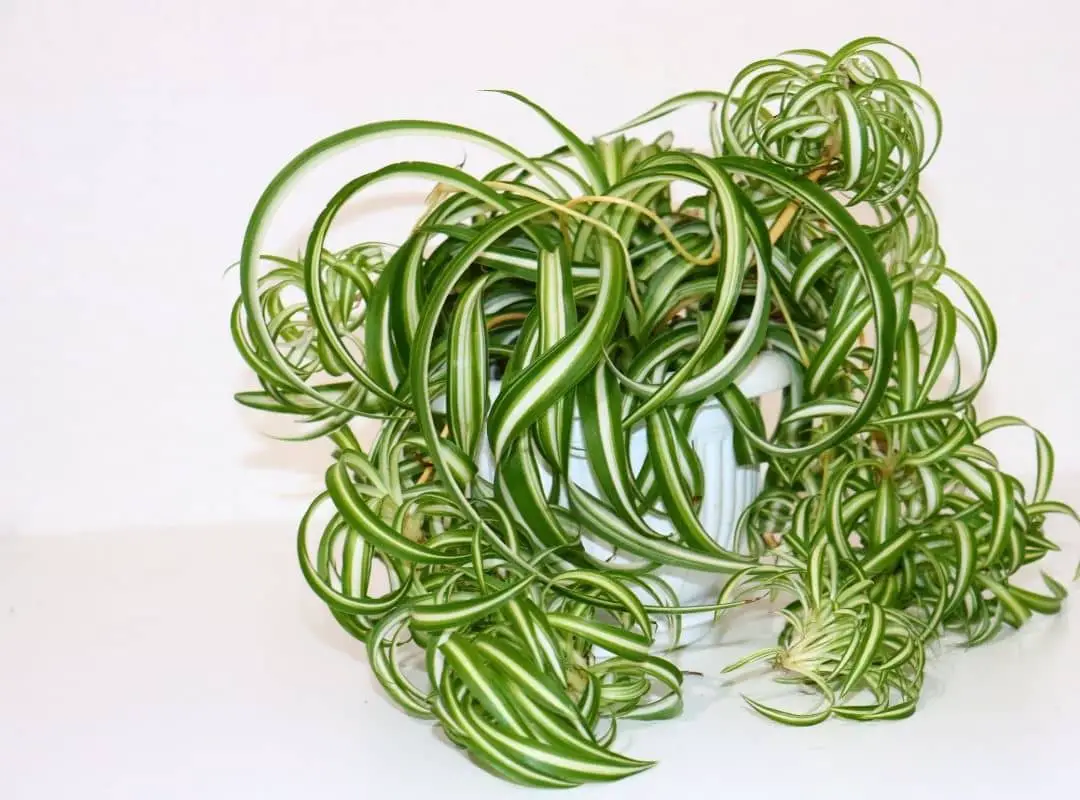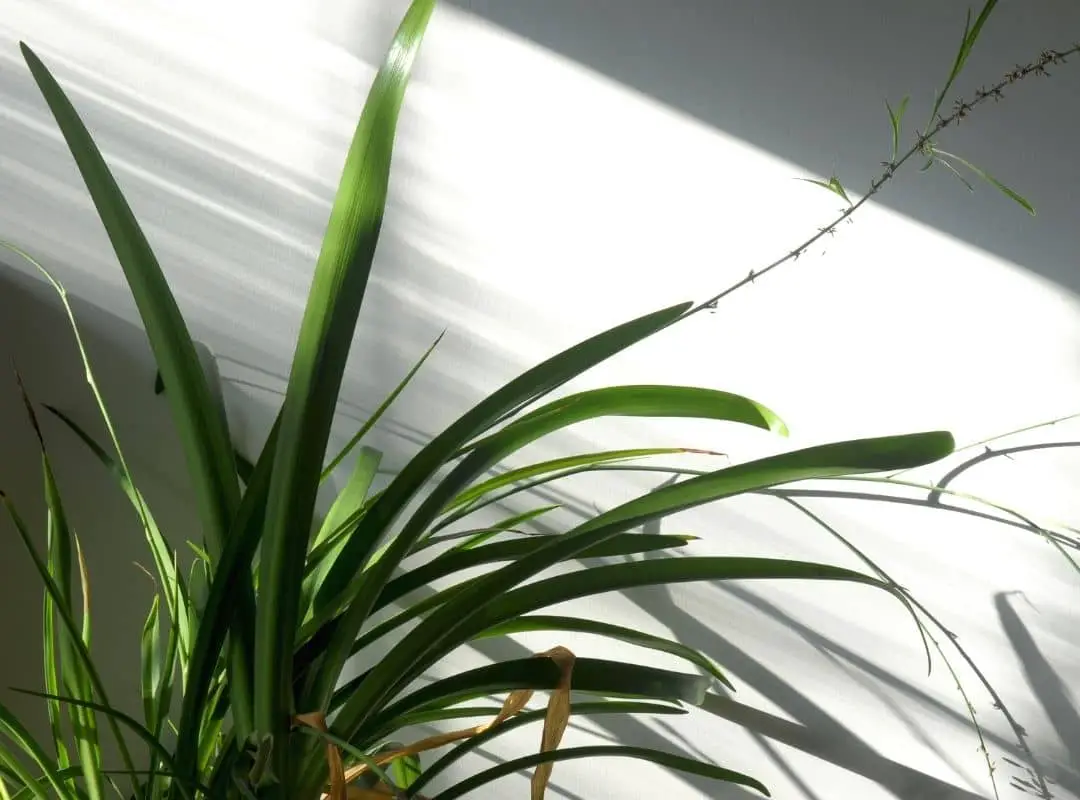The Hawaiian Spider Plant is a tropical houseplant and it is a hybrid of the traditional spider plant (Chlorophytum comosum).
Scientific name of the Hawaiian Spider Plant’s is Chlorophytum Viridescens and the Hawaiian spider plant is also known as the Golden Light. The Hawaiian Spider Plant belongs to Asparagaceae family . It is small in size and it has green leaves with vivid champagne shades.
It is easy to spread and is an ideal supplement to a living room. With glossy green leaves in rich champagne colors, this intriguing plant has a thin, compact scale.
The hawaiian plant can withstand from full sun to partial shade and it is like to live in well-draining soil. These conditions create this Hawaiian spider plant up to 6-12 inches (15-30 cm) height.
This plant develops loads of pretty small spider plant babies that can be planted easily and multiply rapidly in just a few years, perfect for beginners or those attempting to replicate as a houseplant. As time goes on, we expect this plant to really take off in popularity, to be really easy to look after and to have more vivid greens than the insanely common Clorophytum comosum.
In a vast range of settings and standards of treatment, they can do well. If you are an overbearing plant caretaker who needs to water as much as possible or a forgetful person who finds himself neglecting plants, this is adaptable to each and can be easily propagated to multiply the chances of success of at least one plant.
How do I identify a Hawaiian spider plant?

The Hawaiian spider plant has clear variegations for fast and fresh growth rate, but the stripes fade as the leaves grow, leaving only delicate strips along with the foliage in different shades of green.
With glossy green, creamy, and slightly curved leaves in rich champagne colors, this intriguing plant has a thin, compact scale. Build this spider plant up to 6-12 inches (15-30 cm) tall.
How do you take care of a Hawaiian spider plant? Explain each
Size
The Hawaiian Spider Plant is Built up to 6-12 inches (15-30 cm) tall.
Growth
These plants are so abundant and grow so rapidly that within a year your original baby could produce huge numbers of babies of its own.
Light Requirement
Spider plants prefer to be in areas that are bright, but away from direct sunshine. Make sure you’ve got your spider plant where adequate shielding is possible to protect it from burning from the sun’s heat. Partially-shaded areas are also okay, just do not position your spider plants in heavily shaded areas.
Temperature and humidity
Spider plants, while they can be cultivated in colder areas, are naturally tropical plants. They like temperatures from 21 to 32 degrees of Celsius (70 to 90 degrees of Fahrenheit).
With extended exposure to temperatures below 60 degrees of Fahrenheit (15 degrees of Celsius), spider plants will survive lower temperatures down to just above zero, but will not expand and thrive. Hawaiian spider plants should be kept indoors in areas which are too cold.
Hawaiian spider plants like to live in warm and humid environments. If you are living in a low humid area you can spray once to keep Hawaiian spider plants healthy. In the winter misting helps to dry the indoors also.
Is it cold hardy?
The answer to this question is “No”
They like temperatures from 21 to 32 degrees of Celsius (70 to 90 degrees of Fahrenheit).
Zone
The Hardiness zone ofOxalis palmifrons is 9 to 11: from 25 degrees Fahrenheit (-3.9 degrees Celsius) to 40 degrees Fahrenheit (4.4 degrees Celsius).
(A hardiness zone is a geographically defined region in which, as defined by climatic conditions, a certain type of plant life is able to expand, including its ability to withstand the minimum temperatures of the zone)
Watering Requirement
Water requirement of the Spider plants is low. So, they cannot live long dry periods but they do not require everyday watering. Water, so, until the land is dry. By digging your finger into the field at around 5 cm (2 inches) thick, you can measure the soil moisture.
Instead of tap water for spider plants, it is safer to use rainwater, filtered, or bottled water because tap water can contain salt and fluoride that are not good for these plants. Be sure the water is not too cold or too warm at room temperature, or it will shock the plant and weaken it.
Soil Requirement Type / pH
Hawaiian Spider Plant Grows in damp, well-drained soil. The mixture of coconut peat, perlite and compost will lead to these plants’ healthy growth. Coco peat or coconut coir helps to retain soil moisture, while perlite helps to aerate the soil and drain the excess water.
Flowering and Fragrance
Occasionally, spider plants at the ends of their long arching stems grow small white flowers. These flowers are always so short-lived and unremarkable that they go almost unnoticed. The flowers of spider plants are very tiny and white.
Pot size Potting and Repotting
The Hawaiian spider plant needs 6’’ and 8’’ pots.
Because much of their development is from their leaves and plantlets, spider plants don’t need to be repotted often. Hawaiian Spider plant repotting is simple. That is the time to report your Hawaiian Spider plant as the root bulb begins to pop out from the top of the flower. Spring is a great time for repotting spider plants.
Fertilizer and time of year
The fertilizers needed for spider plants are not. But fertilizers should support the growth of the Hawaiian spider plant. Spider plants are suitable for all-purpose, full, water-soluble or granular time-release fertilizers. Using non-fluoride fertilizers and eliminate boron as well.
Use just half the amount prescribed for your spider plant by the fertilizer maker, since too much fertilizer can kill your plant.
Feed the spider plants once every 3 months during the summer season with a healthy liquid fertilizer. Fertilizers are never needed during fall and winter.
Dormancy
The Hawaiian spider plant will live below 50 degrees of Fahrenheit, but it will go dormant and stop growing.
Can be toxic to pets
The plant is known to be non-toxic, but it can actually affect cats and can lead to an upset stomach and vomiting if consumed.
Common bugs and illness issues
- Discolored Foliage
Due to the type of water, too much light, or too little moisture like various factors, spider plants can grow brown tips. Hold the spider plant away from the direct sun so that it won’t harm its leaves. Too much sun will bleach the leaves of a spider plant as well. For your spider plants as well, preserve a humid climate.
- Root rot
If the leaves on your sample tend to turn yellow or wilt, and the soil looks a little wet, the problem could be root rot. Root rot is also caused by overwatering, excessive ventilation, improperly drained dirt, too wide a pot or any of the above. They can’t get the oxygen they need while your houseplant’s roots are lying in soggy dirt. This leads them to refuse to take water to the vegetation and ultimately, they will die off. Ironically, plants that succumb to root rot with oversaturated roots can inevitably start to suffer from dehydration. And in the meantime, in the soggy soil, fungi and bacteria will quickly proliferate, only making matters worse.
- Bacterial diseases
The leaves of the spider plant will grow black spots on the leaves due to a bacterial attack. Removing the infected leaves is a simple solution to this problem, as it can spread easily.
- Pests
Hawaiian Spider plants, including spider mites, mealybugs, and aphids, are vulnerable to pests. To drive the spiders safe, insecticidal soaps or remedies can be added to your spider plants. Be sure to keep an eye on your spider plants to prevent long stretches of insect infestation. Your plant can be destroyed by pests, especially aphids.
special care tips for hawaiian spider plant
- Pruning
Unpruned spider plants can grow to a bushy plant of between 60 and 90 cm (2 to 3 feet). If that’s how you want it, then you should keep them as they are. If your spider plants are to be kept at a certain height, prune them in spring or summer. Cut the long stems that produce plantlets or spiderettes. Sharp pruning scissor and snip can be used. Dead flowers and leaves can be removed.
- Remove all leaves and roots that are dead or dying as well.
- cut off the brown tips of spider plants
First, make sure the scissor is sharp for accurate cutting.
Second, it’s better to break off the full leaf if any of the leaves are a brownish color.
Finally, when cutting, shape the leaf with the cuts and leave behind a small amount of brown tip to prevent a fresh wound from opening.
- With yellow leaves present due to excess minerals or fertilizer in the soil and lack of sun, you may need to report the spider plant in more neutral soil.

How do you propagate a Hawaiian spider plant?
It is easy to disperse Hawaiian spider plants. They produce babies straight from the flowers as they bloom in the summer! Thus, the best way to spread is to cut the babies off and plant them in pots.
If you suspend the plant, they could even be rooted in water and then let the baby’s roots stay in the water.
It is also possible to set small pots filled with soil next to the parent plant and protect the baby in the earth. Cut it free from the parent until the baby has rooted itself into the earth.
To grow new seeds, the short stalks that spring up can be planted. Pin them down against the soil in a small pot as the baby plants grow on these stalks. It’s possible to use a toothpick. The roots will start to grow, this is the time to free the babies from cutting.
If you have difficulty getting the babies to survive, try to stimulate root development with a little rooting hormone. As for the dirt, utilizing a very well aerated rapid draining surface.
Hawaiian spider plant benefits
Good for health
The Hawaiian Spider plant has been found to be helpful in accelerating the rehabilitation of patients. Some tests have found that, relative to those without a spider plant, the recovery rate of patients undergoing surgery was higher in the spider plant space. In addition, it also lowers some health-related conditions, such as concerns with blood pressure or heart rate, anxiety or depression.
Non-toxic
Hawaiian Spider plant is safe for pets, but it is important to be vigilant to protect pets from a disturbed stomach due to the indigestible chemical compound.
Easy to care
Hawaiian spider plants are easy to cultivate because they are able to adapt to different climatic environments. Hawaiian spider plants can be grown under direct or indirect sunlight.
Air purifier
Hawaiian spider plants can remove toxic air (carbon monoxide, xylene, formaldehyde and toluene) from the environment. So, Hawaiian spider plants are the natural air purifier.
To decorate the environment
This species looks amazing in a hanging basket, as far as houseplants go.
And on a stand, where the offsets will spill over, it also works beautifully.
Credit to : Erika Lodes
